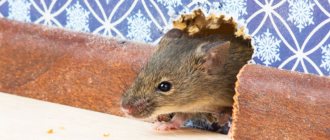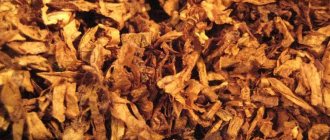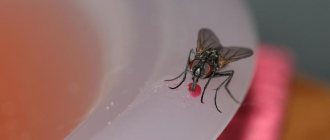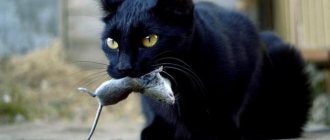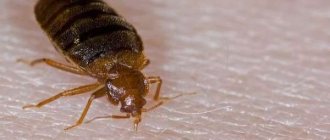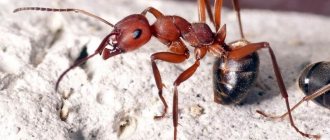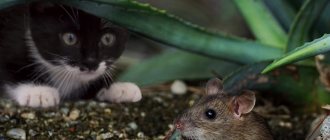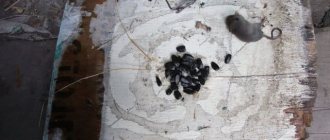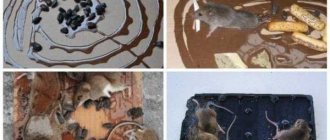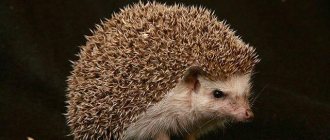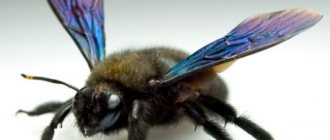There are so many things summer residents have to fight for the quality of their harvest! But no matter what measures are taken, there is someone nearby who just dreams of nibbling carrots or potatoes in the pantry, ruining the flowers in the flowerbed, or doing some other damage. In general, mice do not sleep.
Trying to fight these rodents, summer residents use any means - using strategic thinking, setting up different types of mousetraps and generously scattering poison in the corners.
To some, these methods of getting rid of the mouse “army” will seem inhumane. In addition, pets or children can be harmed by mousetraps and toxic substances. And this should not be allowed under any circumstances. Therefore, you can try a relatively peaceful way to drive mice away from your area - with the help of plants. Some types of plants can be used to prepare poisoned bait, and some can scare away uninvited tailed lovers of other people's crops with their smell or the presence of thorns.
And what kind of plants are these?
Daffodils
More precisely, not the flowers themselves, but their dug up bulbs. To protect plantings of root crops (potatoes, carrots) from mice, in the summer they dig up daffodil bulbs and distribute them over the entire area of the beds, mixed with coriander stems, and then cover them with mulch.
Daffodils are able to protect against mice and their bulbous “colleagues in the flowerbed” - tulips. Mice are always ready to taste their bulbs. To protect these flowers, daffodil bulbs of low-growing species are planted around the tulip bed in the fall.
Elder
Herbs against rodents A well-known folk remedy is elderberry for mice. People have known about the unique properties of the bush for a long time. Elderberry has repellent and mild insecticidal properties. Rodents cannot stand the unpleasant odor emanating from the branches and the hydrocyanic acid that elderberry roots secrete, and therefore avoid the tree.
On a note!
According to experienced gardeners, harmful insects do not settle near elderberries. Therefore, in order to clean the room from pests, it is necessary to place elderberry branches in the house.
Plant baits
If mice do not want to leave your area in an amicable way, it is time to move on to a more severe means of control - baits.
The plants from which baits are made are very poisonous. Don't forget about safety precautions.
Here are some bait recipes:
- grind crow's eye rhizome (5 g) and sunflower seeds (100 g);
- prepare powder from tubers of aconite antidote (50 g) and mix it with 1 kg of cereal or flour;
- prepare an infusion of Lobel's hellebore rhizomes. This remedy for getting rid of mice is prepared as follows: 100 g of rhizomes are kept in 200 ml of water for 4-5 days, adding a little hydrochloric acid to the decoction. Then grain is poured into the finished infusion and waited until it swells;
- Grind the castor bean seeds and mix them with unrefined vegetable oil.
Baits are placed in places accessible to mice. Rodents will happily eat foods diluted with poison (flour, cereal, sunflower seeds, grain), and after such a treat you are unlikely to see uninvited tailed guests on your site.
All means are good in the fight against mice. However, many summer residents want to solve this problem in a civilized way. For example, drive away mice with plants.
Do you have your own proven means of combating these rodents? Share in the comments!
Herbs protectors
Plants used to control rodents are divided into three categories:
- plants that repel mice due to their repellent properties: pests cannot tolerate their smell;
- prickly grasses - the valuable properties of such plants are the thorns that dig into the skin of animals, due to which rodents avoid them;
- natural insecticides - we are talking about poisonous plants that are used to prepare baits.
Read below about which plants mice are afraid of.
How to use scents correctly
In order for aromatic substances to have the desired effect, they must be used correctly. There are a number of rules that should be followed:
- Essential oils are placed in close proximity to animal burrows. The liquid must be applied to a cotton pad or napkin. You can smear the corners of the room. In apartments, it is recommended to add oils to the water for washing floors.
- Dried herbs will smell longer if they are placed in cloth bags and tied.
- Fresh plants quickly lose their aroma, so they need to be replaced periodically.
- Rodents quickly get used to some smells. It is worth alternating scents.
- For maximum effectiveness, several different herbs can be used together.
It is dangerous to use plants that are toxic and allergenic at home. It is better to give preference to herbs such as chamomile, mint, lemon balm.
Homemade traps
Do-it-yourself mousetraps are simple, uncomplicated devices that are no different in effectiveness from store-bought ones. And some may even surpass them in terms of the number of “catch”.
Important! When designing a homemade trap using a container (cans, bottles), use sunflower oil. By pouring it inside, you will make the animal’s paws become oily, which will not allow it to escape, moving along the inner walls of the vessel.
One and a half trap
Only a bottle with a standard narrow neck is suitable for this. The 5-liter is not suitable due to the wide neck. The procedure is as follows:
- Tie a strong thread or rope to the neck.
- The other end is to the top of the table leg.
- Place bait inside.
- Place the bottle horizontally, so that at least 2/3 of the bottle hangs from the table.
Trap in action Source cdn.fishki.net
The meaning of the trap is that the mouse, having penetrated the bottle, will run to the bait. Once in the back (hanging part), the container will tilt, it will tilt and fly down. The cord will not allow the bottle to fall - this way the trap will be suspended in the air, and the rodent will not be able to get out due to the narrow hole.
Trap from a jar, bucket
The principle is that the upper part of the container is sealed with paper, in which an incision is made crosswise. The bait is placed inside. To increase the effectiveness of the method, build a bridge for the mouse, making it easier for it to get up to the paper false cover. In this case, it is enough to lean against an ordinary ruler or a branch brought from the garden.
Trap with false lid Source i5.otzovik.com
The point of the trap is that, sensing the smell of bait in the bucket, the mouse falls on the paper lid and falls through the cuts made. She won't be able to get out because her paws are stained with oil.
Salt trap
Pour water into a bucket and make a strong salty brine in it. You can hide the liquid by adding sawdust. Their quantity should be such as to completely cover the surface after swelling. Place fragrant bait in the central part. Next, you can organize a bridge from a wooden ruler, or you can leave it without it. The principle of operation of the trap is that a rodent, driven by the desire to eat the bait, steps onto sawdust or a bridge and falls into the salt concentrate. He will no longer be able to get out of it.
Glue trap
In this case, you will need special mouse glue. The consistency is spread on cardboard or something else, and the bait is placed in the center. A mouse caught in glue cannot free itself and dies from dehydration.
Glue trap for rodents Source i5.otzovik.com
Important! The disadvantage of this method is that the trap is considered disposable. It has to be thrown away along with the dead mouse.
Wooden house
Assembling a wooden house is one of the most labor-intensive ways to catch mice using improvised means. The principle of the device is that a box is assembled that looks like a birdhouse, but with entrances not in the front, but on the sides.
It should consist of two parts: the bait is suspended in the upper one, and the lower one is used as a place for imprisoning mice. To prevent escape as a result of a chewed board, line the inner walls of this area with tin. Between the top and bottom, a bridge is made of two planks with springs holding them in a horizontal position. Under the weight of the rodent, they bend - the animal falls into the lower part. The released board-bridge rises to its original position and is ready to receive the next visitor.
Seeds in the war for housing
Considering the cleanliness of mice, clinging parts of plants can be used. Rodents are afraid of the seeds of blackroot, thistle and tripartite. If it gets on their fur, it will be impossible to get rid of. Once they catch the seeds, the pests will leave the home.
You should not scatter seeds throughout the house. They are placed only in those places where there are minks, so that animals do not want to go through them.
Burdock
Rodents hate burdock. Its inflorescences will help in the war for housing. Once caught in the burrs, the mice die because they cannot free themselves. Surviving animals leave the premises forever. And if you plug the holes through which rodents enter with inflorescences, then even rats will not be able to get into the house.
Natural flavors
Animals that hunt mice will help solve the problem. You can get a cat. The smell alone will scare the pests and they will leave the room.
If this is not possible, it is possible to simulate the presence of a cat. It is appropriate to use used cat litter. They sprinkle it on the corners and entrances to burrows. They also use rags soaked in cat urine.
Faster results can be achieved by imitating snakes and rats. For the former, mice are food, for the latter, they are competitors in the struggle for food sources. A small amount of snake and rat excrement will repel pests. They are placed in the place where the rodents appeared. You can get excrement at any pet store.
Chamomile
Chamomile will not only pleasantly diversify the landscape of the site, but will also help protect it from rats and mice - they do not like the aroma of this plant.
To protect against rodents, dried chamomile bouquets are hung in utility rooms, summer kitchens, sheds and garages.
Chamomile flowers can be scattered on the floor of the attic or filled with them into holes in which animals are hiding.
Forest mint and peppermint
Even children know about the beneficial properties of mint. The herb has antiseptic, antispasmodic, and analgesic properties. It is used in the food, confectionery and perfume industries, as well as in folk medicine.
The grass is also good at repelling mice and rats.
Interesting!
If mint beds grow around a country house, rodents will avoid the area. House ants, moths and mosquitoes are also afraid of the mint aroma. To prevent pests from bothering you, you just need to place pleasantly smelling mint sprigs in the room.
Marsh rosemary
Another effective remedy is wild rosemary for mice. It is also effective against various harmful insects: flies, mosquitoes. Rodents will not enter a house in the rooms of which wild rosemary branches with leaves will be laid out
Important!
The smell of a plant characterized by a high content of essential components can provoke negative consequences in the form of malaise and headaches among the inhabitants of the house. Therefore, it is still not worth abusing it.
Datura
Recent Entries
Lilac perennials that are beautiful, compact and do not crowd out other plants Why when buying seedlings you should not take the sellers’ word for it and how to determine the age of the plant using 3 signs Tomato seedlings have turned purple or whitish: why the color has changed and how to save the plants
Datura is a perennial herbaceous plant of the nightshade family, in the form of a shrub. Datura contains tropane, scopalamine, atropine, hyoscyamine - alkaloids that make it poisonous. A large number of toxic substances are contained in seeds and flowers. Grain soaked in a decoction of above-ground parts of the plant is used as bait.
